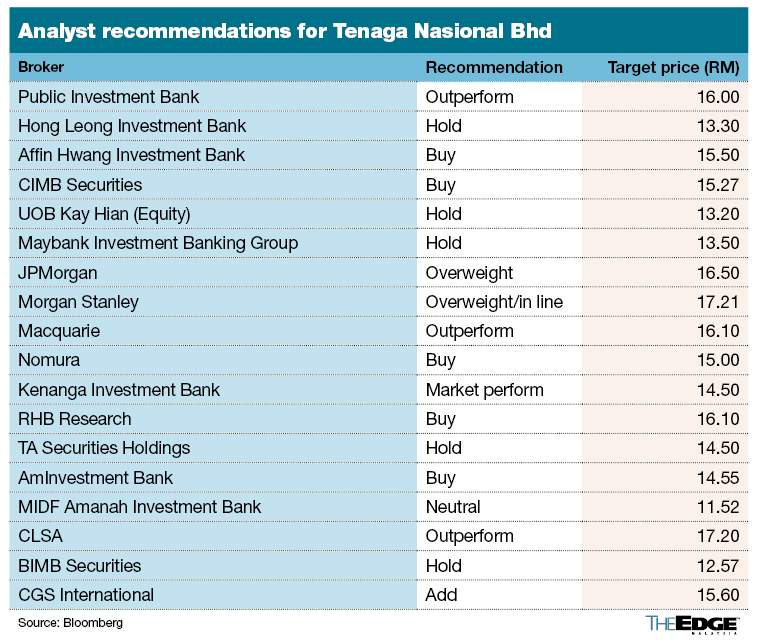
KUALA LUMPUR (July 19): Tenaga Nasional Bhd (KL:TENAGA) or TNB is expected to keep increasing its capital expenditure (capex) beyond 2030, with an additional RM1 billion to RM2 billion a year, to maintain its power grid infrastructure, which recently hit new peak demand due to data centres, said PublicInvest Research.
The additional capex is on top of TNB’s committed RM90 billion for six years until 2030, to support energy transition initiatives and system upgrades.
“However, we expect capex remain elevated beyond 2030, with additional RM1 billion to RM2 billion a year to upkeep its standard as Asean Power Grid flagship infrastructure. The introduction of third-party access and the Energy Exchange Malaysia would intensify grid utilisation, and hence increase needs for maintenance and upgrades," the research house said in a note.
PublicInvest said TNB's peninsular grid system had recently hit a new peak demand at 20,045MW, exceeding the initial projections of 19,365MW in 2025 and approaching 20,755MW in 2030.
“We believe this was primarily driven by higher demand from data centres, with two projects (about 535MW) completed under the Green Lane Pathway in March 2024.”
The research house said current energy loads for the projects are about 115MW, but this is expected to increase gradually due to a booming data centre industry.
“On this basis, we adjust our capex assumption higher by another RM1 billion to RM2 billion, slightly increasing the tariff of transmission and distribution for the respective regulatory periods to capture more adequate return for increasing future capex.”
PublicInvest upgraded its call on TNB to 'outperform', and its target price to RM16 (from RM13).
Based on TNB’s data centre demand outlook, about nine data centres worth 700MW in energy demand are expected to be completed in 2024, while 10 projects worth 2000MW in energy demand are expected to load up from 2025.
This suggests that peak demand would break a new record, as soon as more data centres are commissioned, surpassing the initial projection of 20,755MW in 2030.
According to the Peninsular Malaysia Generation Development Plan 2020, 36% of power plants (about 9,720MW) are set to retire between 2024 and 2030. Given the current demand growth trajectory, the situation could pose risk of the reserve margin falling below the approved level of 23% to 28% set by the regulator.
“Thus, we believe the regulator could mitigate the situation by extending the retiring plants to maintain an adequate margin until stable capacity is installed on the grid, namely the 9,372MW newly commissioned capacity as per the development plan. We understand that renewable energy programmes of about 3,423MW are in development and tendering phases, which are intended to replace the expiring thermal plants,” PublicInvest added.


